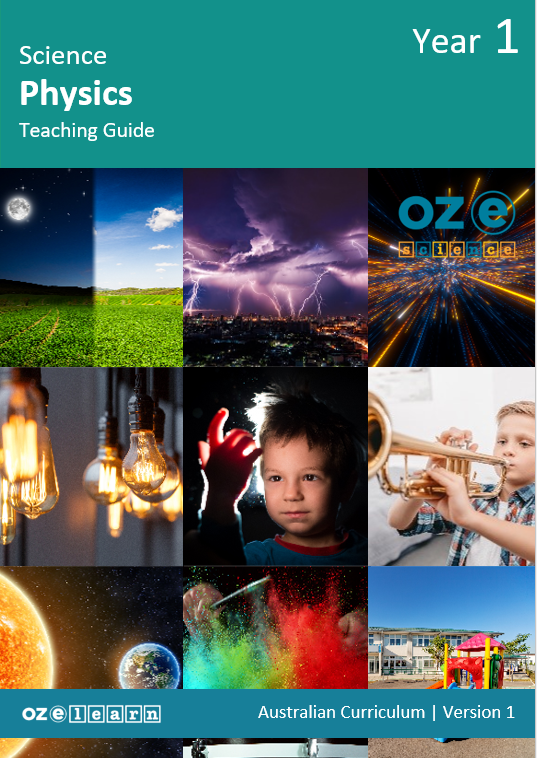Oz-e-science
In lessons 1 to 9, students learn about:
- what we can see in the day and night and look for objects that we can see in the day and night skies
- what light and dark are and representing light photons
- identifying natural and human made sources of light and the element tungsten and its use in lights
- the senses that detect light and observing the light using their senses
- physical actions that create sound and record things that make sound
- observing things that make sound waves. sorting sounds that we can hear
- classifying if an object makes light, sound, or both
- epresenting how sound and light travel by drawing picture
- observing sound using their senses. describing sound using their senses.
- Investigate what we can see in the day and night.
- Look for objects that we can see in the day sky and the night sky.
- Identify what light and dark is and objects that can be pushed and pulled.
- Represent light photons.
- Identify natural and human made sources of light.
- Describe the element tungsten and its use in lights.
- Identify the senses that detect light. Observe light using senses.
- Identify physical actions that create sounds.
- Record things that made sound.
- Observe things that make sound waves.
- Sort sounds that we can hear.
- Analyse if an object makes light, sound, or both.
- Represent how sound and light travel by drawing picture.
- Observe sound using our senses.
- Describe sound using our senses.
Progress Tests
Progress Tests are conducted after every second lesson, allowing teachers to monitor student understanding of the concepts taught over the past two lessons and to identify where reteaching is needed. The Teaching Guide contains the testing questions, and the Student Workbook has a section where students write their answers and score themselves.
Structured Research Activity
The Structured Research Activity (SRA) for this unit is for students to observe and describe sound using their senses. The SRA takes place over two lessons so students can apply the Science Understanding and Science Inquiry Skills covered in the unit. Teachers use the Guide to Making Judgements, which is included in the Teaching Guide, to mark the SRA.
End-of-Unit Assessment
The last lesson is the End-of-Unit Assessment, which has a variety of question formats (e.g., label the diagram, circle the correct answer) to assess student mastery of content from the unit. The End-of-Unit Assessment is in the Teaching Guide. Teachers copy the assessment and distribute to students at testing time.


